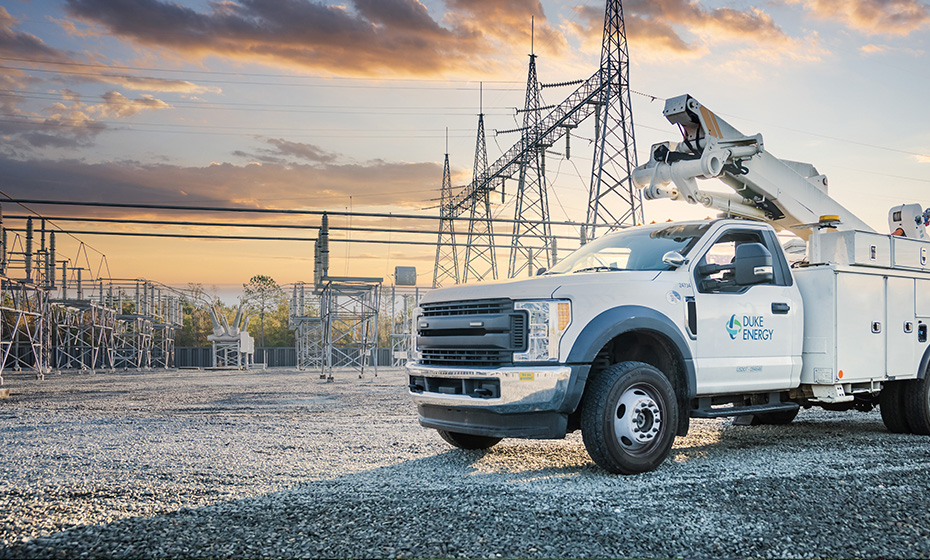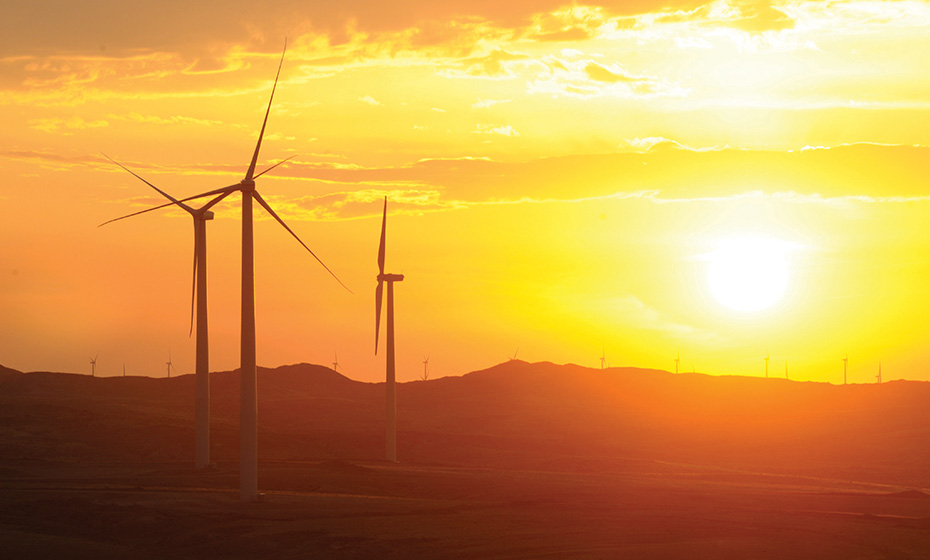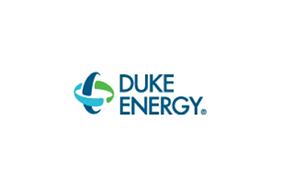How Duke Energy Plans for a Reliable, Affordable, Low-Carbon Future
Q&A with Glen Snider on how the company plans for the future of energy in the Carolinas
Published 08-08-22
Submitted by Duke Energy

By Jessica Wells
The energy grid is considered the world’s largest machine – a network of power plants, wires and other components that work together to power millions of homes and businesses. It has been evolving with new technologies and power sources since the 1880s, but today, it’s changing faster than ever.
Energy companies, including Duke Energy, have goals to generate electricity with less carbon emissions and more renewables while still providing reliable, affordable power. Duke Energy has already reduced its carbon output by 40 percent since 2005 and plans to reach net-zero carbon emissions by 2050.
How do you plan for upgrades on such a massive machine?
At Duke Energy, analysts and experts with decades of experience look at data and industry trends to project how much power customers will need years in advance.
In this Q&A, Glen Snider, Duke Energy’s managing director of resource planning and analytics, explains how his team is preparing a plan for the Carolinas that will increase efficiency and reliability while lowering carbon emissions and managing costs.

What’s your role with the company and in the development of the Carolinas Carbon Plan?
I have been in the industry for almost 35 years, and with Duke Energy for 30 of those years, in various roles that have examined power system operations and system economics. Today, I oversee the development of long-term plans that ensure system reliability and customer affordability while improving our environmental footprint. Those three objectives are at the heart of our carbon plan.
During the development of the carbon plan, I helped coordinate a team of talented individuals in designing a plan that considers a variety of customer demand-side programs, new supply-side generation alternatives, storage technologies and required grid enhancements that are presented in our plan.

What changes have you seen since you started your career?
A little over 10 years ago, Duke Energy customers in the Carolinas were served almost exclusively with coal and nuclear resources, getting nearly half of their electricity from one or the other. Since then, we have retired about two-thirds of our coal units in the Carolinas and replaced them with efficient, lower carbon emitting natural gas resources and carbon-free solar. Continuing this clean energy transition presents both opportunities and challenges for the system and our customers.
Our industry is asking, “How do we manage the ongoing energy transition in a manner that’s affordable for customers while maintaining strong 24/7 reliability?” There are many perspectives on the best approach, so being part of that conversation has been really exciting work.

What is the Carolinas Carbon Plan?
Our proposed plan provides a foundation for state regulators to consider as Duke Energy works toward its goal of net-zero carbon emissions by 2050 – the final carbon plan will be determined by regulators.
By 2035, our proposed clean energy transition in the Carolinas would include:
- More than three times the current level of solar.
- Diversification of renewables with wind resources.
- Significant growth in energy storage – from 3,700 megawatts to 5,900 MW to support renewables.
- Initial steps to develop zero emissions load-following resources (ZELFRs), such as advanced nuclear units with integrated storage, to enable coal retirements and eliminate natural gas use over time.
Learn more and read the full plan at duke-energy.com/CarolinasCarbonPlan.
How does the Carolinas Carbon Plan fit in that conversation?
In alignment with bipartisan legislation in North Carolina, Duke Energy developed the carbon plan with extensive input from a range of stakeholders, including customers, wind and solar developers, environmental groups and regulatory staffs from North Carolina and South Carolina. We submitted the plan to the North Carolina Utilities Commission (NCUC) as a potential path to achieve the new law’s objective: reduce carbon emissions by 70% from 2005 levels by 2030 and reach carbon neutrality by 2050. Since our Carolinas utilities operate in a dual-state system to improve reliability and keep costs as low as possible, we will also file our carbon reduction plans with the Public Service Commission of South Carolina for its independent consideration.
North Carolina policymakers also recognized that two sources of carbon-free generation in particular – offshore wind and small modular reactors – are emerging technologies that might not be fully available by 2030. The law gives the NCUC flexibility to extend the timing of the 70% reduction target if they believe these resources would be in the best interest of customers. Our plan presents a portfolio to achieve 70% reduction by 2030 with limited reliance on wind and no new nuclear as of that date, and alternative portfolios that rely more on wind and new nuclear to achieve the 70% reduction by 2032 or 2034.
We presented four portfolios for consideration along with the near-term activities that would be required to support any of these four paths. We wanted to give state regulators options in terms of what technologies get adopted and at what pace, so they can weigh the pros and cons to decide what path they believe will be best for the Carolinas.

How is this plan different from our previous long-range plans?
First, North Carolina’s legislation provides clear direction on the pace of carbon reduction.
Another difference was that this plan involved significant upfront stakeholder feedback. Customers, the manufacturing industry, environmental groups and others have strong views on how we should look at this.
We held stakeholder meetings with up to 500 people representing over 300 organizations at each meeting, as well as a series of smaller meetings focused on more technical topics. I think by hearing everyone and understanding them, we’re able to strike a balance.
Is it challenging to project electricity demand and cost years in advance for 4.4 million people in the Carolinas, especially with the speed technology advances?
I explain it this way to my neighbors: we plan our power system to first and foremost ensure reliability. We must ensure that every hour of every day – irrespective of how high customer demand might be or if it’s windy or calm, or sunny or cloudy – that we have enough supply to meet customer demand at every moment in time.
That’s challenging in the Carolinas when we have hot summers, cold winters and mild seasons in between. Demand fluctuates seasonally, daily and hourly. What we do is look at how the system is going to operate not just today but over the coming decades and be able to balance that supply and demand every hour of every day for the next 20 or 30 years.
We’re looking at the cost to do that as well as the cost and availability of different options like solar, wind, nuclear, hydropower or natural gas. The tricky part is minimizing customer costs while ensuring reliability and continuing to improve our carbon footprint.
When you come home, you want it to be 72 degrees inside and not 98 like outside. To do that, we manage an array of resources every minute of every day. We’re turning resources on and off. We’re ramping them up and down. We’re responding to customer demand in real time.
The Carolinas are a popular place to move to and build a business, so we have a growing need for power. That’s why we’ve taken a three-pronged approach with this plan. Prong one is to focus on how we can offer customers – residential and commercial – programs and services to manage their electricity use. We’ve always had an aggressive energy-efficiency program, but there are some real innovative things we can do with managing use and saving money by using electricity during non-peak periods.
Once you’ve minimized that need, then you can look at adding generation resources that have a lower- or no-carbon footprint like growing solar at a faster pace or adding advanced nuclear and offshore or onshore wind to our portfolio.
The third prong is ensuring reliability by adding dispatchable resources like batteries, pumped storage hydropower or natural gas that can be ready at a moment’s notice. That will ensure that whether it’s 8 degrees or 102 degrees, we’ll be able to keep the lights on.
What excites you about leading this process?
In the last decade in particular, the utility industry has gone through such a rapid transition that it makes this type of work very rewarding.
Like all utilities, we have aging infrastructure that requires replacement, and we must have adequate resources to meet needs as people and industry move to North and South Carolina. Trying to figure out how to do that while controlling costs and meeting our other objectives is a fascinating problem to try and solve. It’s challenging but seeing the progress we’ve made over the last decade and the progress we’re looking to make over the coming decade and beyond really keeps me motivated every morning as I come to work.
View original content here.

Duke Energy
Duke Energy
Duke Energy (NYSE: DUK), a Fortune 150 company headquartered in Charlotte, N.C., is one of America’s largest energy holding companies. The company’s electric utilities serve 8.4 million customers in North Carolina, South Carolina, Florida, Indiana, Ohio and Kentucky, and collectively own 54,800 megawatts of energy capacity. Its natural gas utilities serve 1.7 million customers in North Carolina, South Carolina, Tennessee, Ohio and Kentucky.
Duke Energy is executing an ambitious energy transition, keeping customer reliability and value at the forefront as it builds a smarter energy future. The company is investing in major electric grid upgrades and cleaner generation, including natural gas, nuclear, renewables and energy storage.
More information is available at duke-energy.com and the Duke Energy News Center. Follow Duke Energy on X, LinkedIn, Instagram and Facebook, and visit illumination for stories about the people and innovations powering our energy transition.
More from Duke Energy

